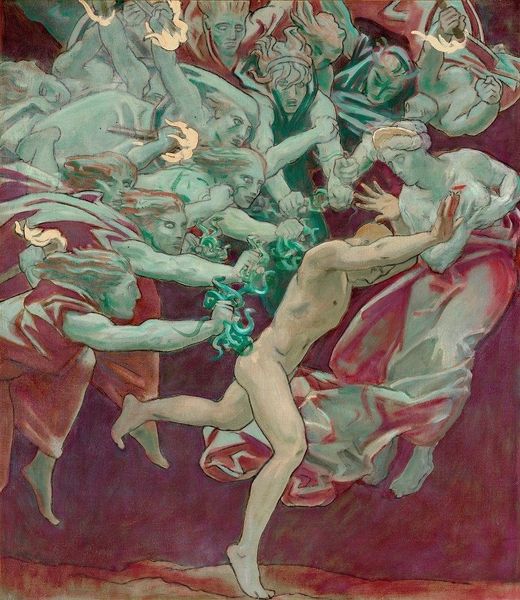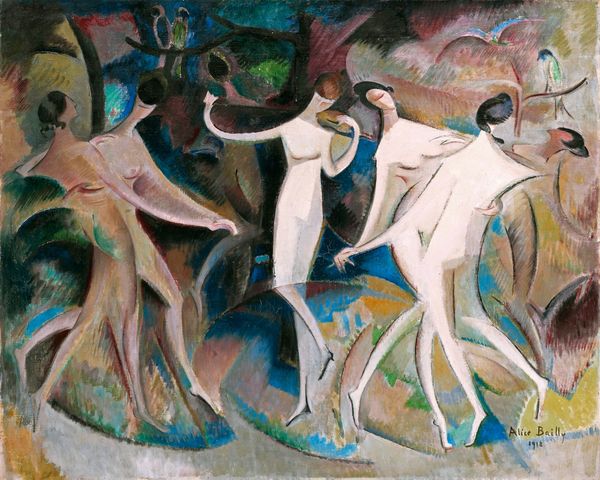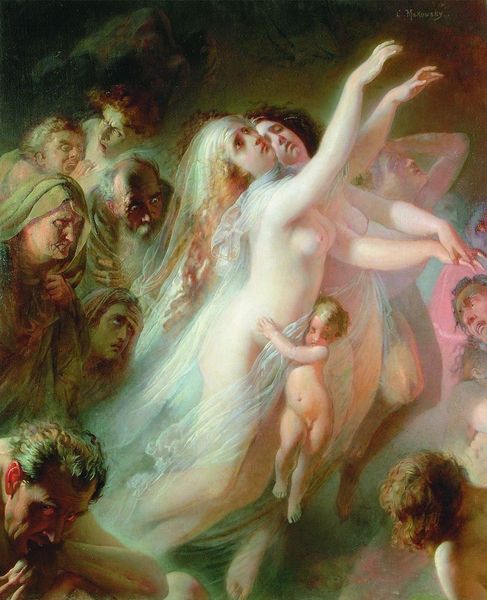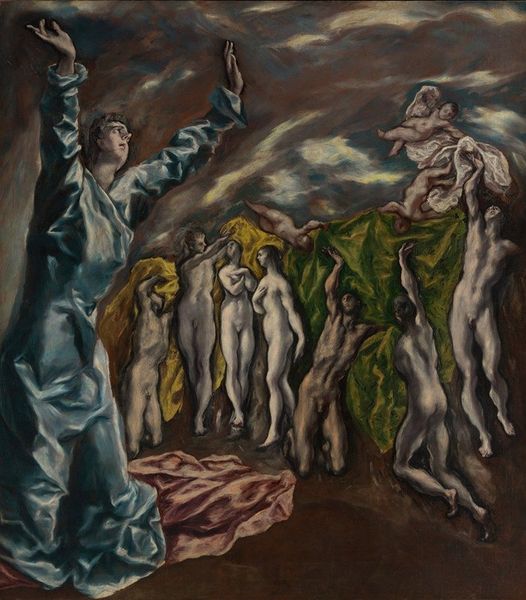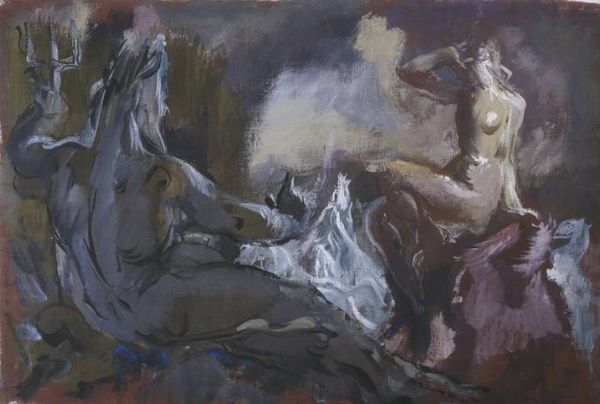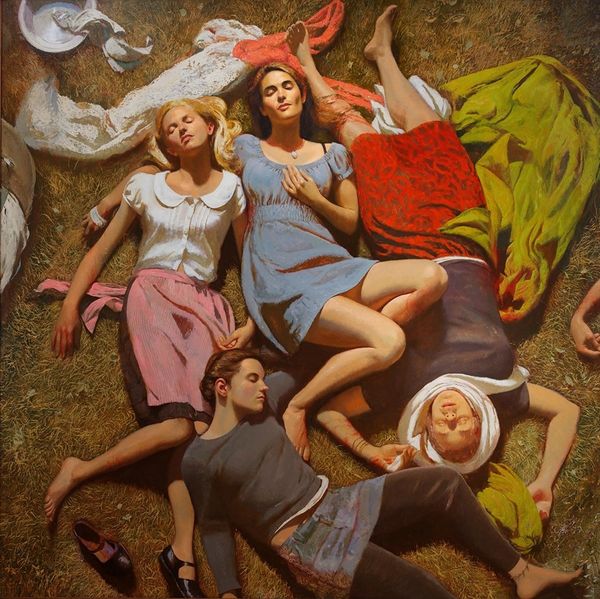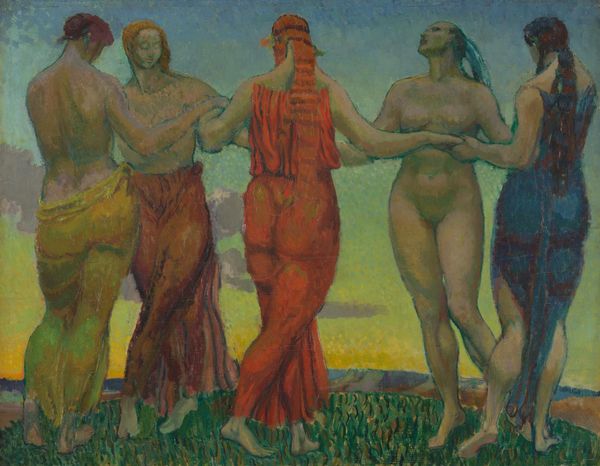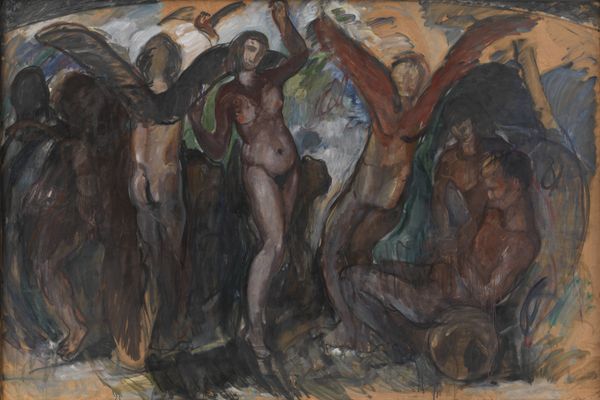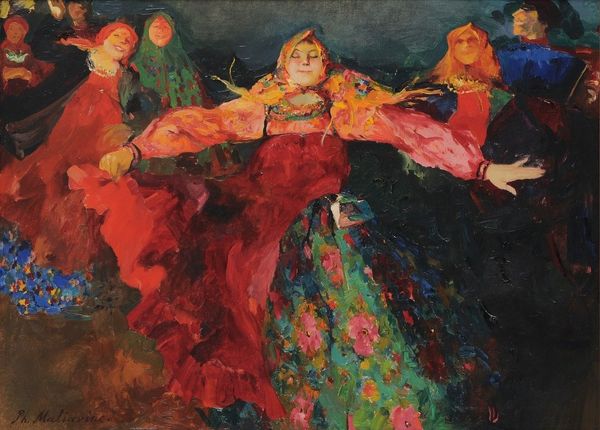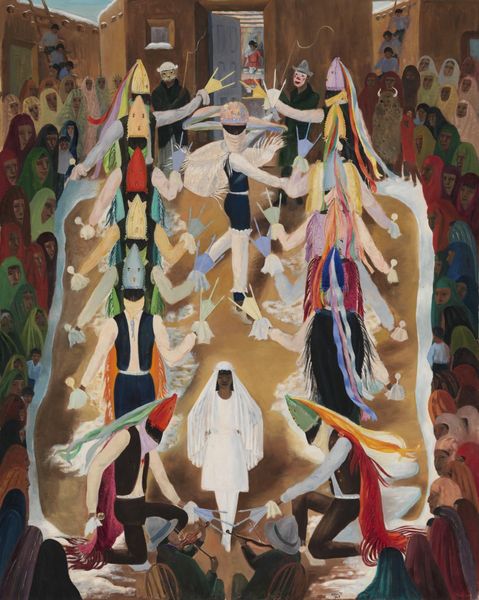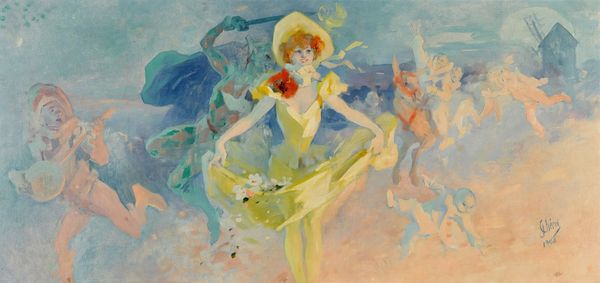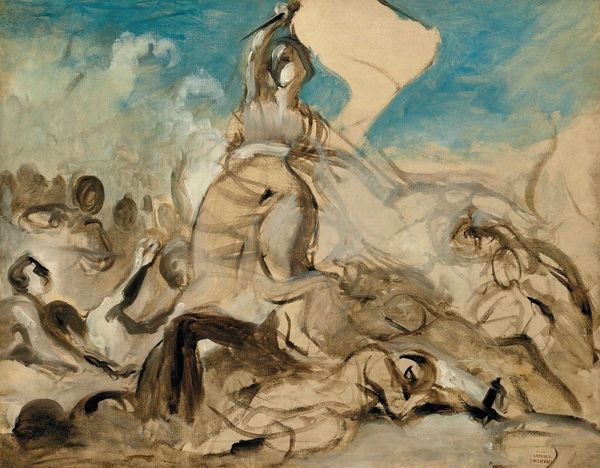
Dimensions: 150 x 290 cm
Copyright: Guntis Strupulis,Fair Use
Editor: Here we have "Jaunība. Ražas svētki." painted by Guntis Strupulis in 1973, using acrylic on canvas. It's striking, isn't it? There's such a contrast between the dynamism of the dancing figures and the static nature of the onlookers. What stands out to you in this piece? Curator: Well, viewing it through a historical lens, what immediately grabs my attention is how this festive scene functions within the socio-political context of 1970s Latvia, then part of the Soviet Union. What exactly does “Ražas svētki” - the Harvest Festival – represent at that time? Is it purely celebratory, or is there perhaps a subtle commentary on collective identity and perhaps a gentle resistance to the enforced ideologies, within what seems like an idealized, almost utopian, portrayal of youthful exuberance and community? Editor: I hadn't considered that angle at all! So, you’re suggesting that this depiction of a harvest festival might carry coded messages about cultural identity within a Soviet system? Curator: Precisely! Note how the bodies, though painted with visible brushstrokes verging on Fauvism and Neo-Expressionism, still retain a sense of collective harmony. It invites us to question whether it's a genuine celebration of Soviet ideals or a more nuanced representation of Latvian cultural values being maintained, even subtly subverted, through art. Is there a deliberate vagueness to avoid censorship? Editor: That's fascinating. The bright, almost fauvist colours and seemingly carefree subject matter appear, at first glance, quite innocent. But framing it within its historical context reveals a much deeper complexity. It makes me rethink how art under oppressive regimes often had multiple layers of meaning. Curator: Exactly. And think about the role of art institutions during that period. Did galleries actively promote art that overtly celebrated Soviet ideals, inadvertently creating space for art like this to operate with greater subtly? Editor: I definitely learned something new today. Considering the socio-political background gives an entirely new appreciation of the artwork's potential interpretations. Curator: Indeed. It highlights how art acts as both a reflection and a negotiator within historical power dynamics.
Comments
No comments
Be the first to comment and join the conversation on the ultimate creative platform.
